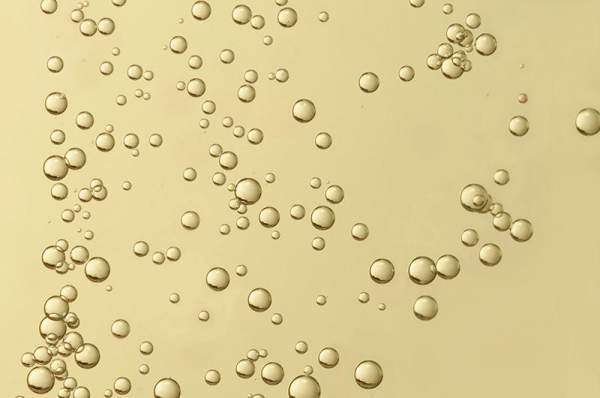
Faced with the increase in premature oxidation phenomena in white wines, and the limitations of the two classic ways of treating musts (hyper-oxygenation and hyper-protection), Vivelys has developed an alternative solution that consists of providing the must with an amount of oxygen according to your needs.
This alternative route, called “Controlled Oxygenation of Musts” (CO2M), makes it possible to reduce the risk of oxidation early and ensure a greater appreciation of the wines.
Use of the natural enzymatic mechanism of the grape
The general principle of this route is based on the use of polyphenol oxidases (PPO), enzymes naturally present in musts.
These mechanisms are highly selective, in contrast to chemical oxidation mechanisms. The supply of oxygen at this stage makes it possible to eliminate the phenolic acids involved in oxidation by the formation of condensation products, which are later eliminated during debourbage (Figure 1).
 Figure 1: Enzymatic oxydation mechanism on musts (Source: Rigaud et al, 1990)
Figure 1: Enzymatic oxydation mechanism on musts (Source: Rigaud et al, 1990)
Vivelys has developed Cilyo®, a tool to determine the optimal quantity of oxygen to be added to a must to avoid enzymatic reactions and thus reduce the sensitivity of the wines to chemical oxydation.
These mechanisms are directly influenced by limiting factors such as the SO2 or antioxidant (ascorbic acid), so it is advised not to proceed with its addition before measuring the must.
The turbidity of the musts also plays an essential role as it is the main source of the PPO. For this reason, the measurement is carried out before debourbage.
Otherwise, the clarification of musts after treatment must be careful (turbidity below 50 NTU) to eliminate as much as possible the brown compounds generated by the CO2M treatment and thus avoid their dissolution on the wines at the end of alcoholic fermentation by the effect of ethanol.
Positive impact on the profile of wines
Vivelys has carried out nearly 5000 measurements on a range of varieties and treatments based on the optimal oxygen dose calculated using Cilyo®.
The analysis of the results shows the positive impact on the profile of the wines.
The oxygenation of musts directly affects the aromatic profile:
- Decreased perception of the vegetal.
- Increase in the maturation of the wines preserving the overall intensity of the “thiol” character of the wines.
 Figure 2: Comparison of the profile of the control wines/O2CM on a Sauvignon Blanc must (Source: Vivelys)
Figure 2: Comparison of the profile of the control wines/O2CM on a Sauvignon Blanc must (Source: Vivelys)
This is presented, for Sauvignon Blanc wines, from an evolution of the pyrazic thiol type profile to a tropical thiol profile.
It is verified with the observation of the stability in the total concentration of thiol 3 MH and 3 MHA on the wines, however, that there is a change in the relationship between these two molecules (test carried out in Gros Manseng).
This result is confirmed by tasting because the 3MHA perception threshold is less than 3 MH (4 ng/l vs 60 ng/l) and is responsible for the typical “tropical fruit” type notes.
 Figure 3: Impact on the oxygen addition on the concentration of thiols. (Source: Vivelys)
Figure 3: Impact on the oxygen addition on the concentration of thiols. (Source: Vivelys)
In the mouth, these is a significant increase in the perception of fat systematically due to the addition of oxygen with Cilyo®.
 Figure 4: Sensory perception of “fat” based on the quanity of oxygen added to the must (Source: Vivelys)
Figure 4: Sensory perception of “fat” based on the quanity of oxygen added to the must (Source: Vivelys)
Increase in quality and appreciation of wines
The interest in CO2M is based on a specific and independent question of each fraction of musts extracted after pressing.
Vivelys' strategy consists of separating musts that are poor and rich in polyphenols by conductivity in order to be able to treat each fraction in a specific way.
The musts rich in polyphenols are treated and clarified, to later be blended with other fractions. This allows for the creation of a wine stable against oxidation with a precise profile, made with different fractions of the must.
 Figure 5: Summary diagram of the must extraction management strategy (Source: Vivelys)
Figure 5: Summary diagram of the must extraction management strategy (Source: Vivelys)
This strategy allows for a significant increase in the quality of the final wine without additional production costs.
An increase in the category of press musts is achieved; from being the least valued, to revaluing them in much higher categories.
Laurent Fargeton ® Vivelys
Related news
Oxygen: friend or enemy?
These days, with the level of knowledge that we accumulate of all those reactions in which O2 plays an important role, we are clear that the management of this element in the winery is essential to be successful in obtaining the target wine profile.
